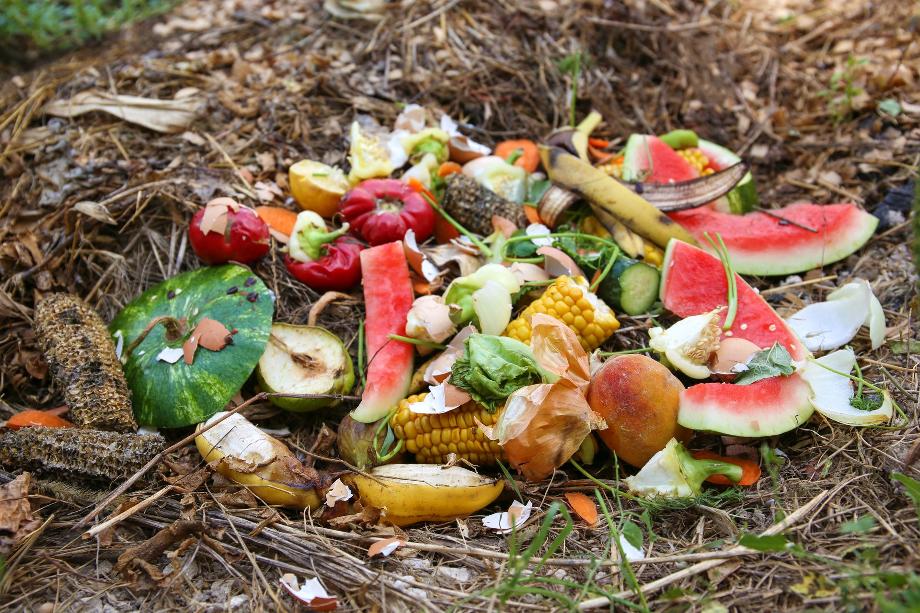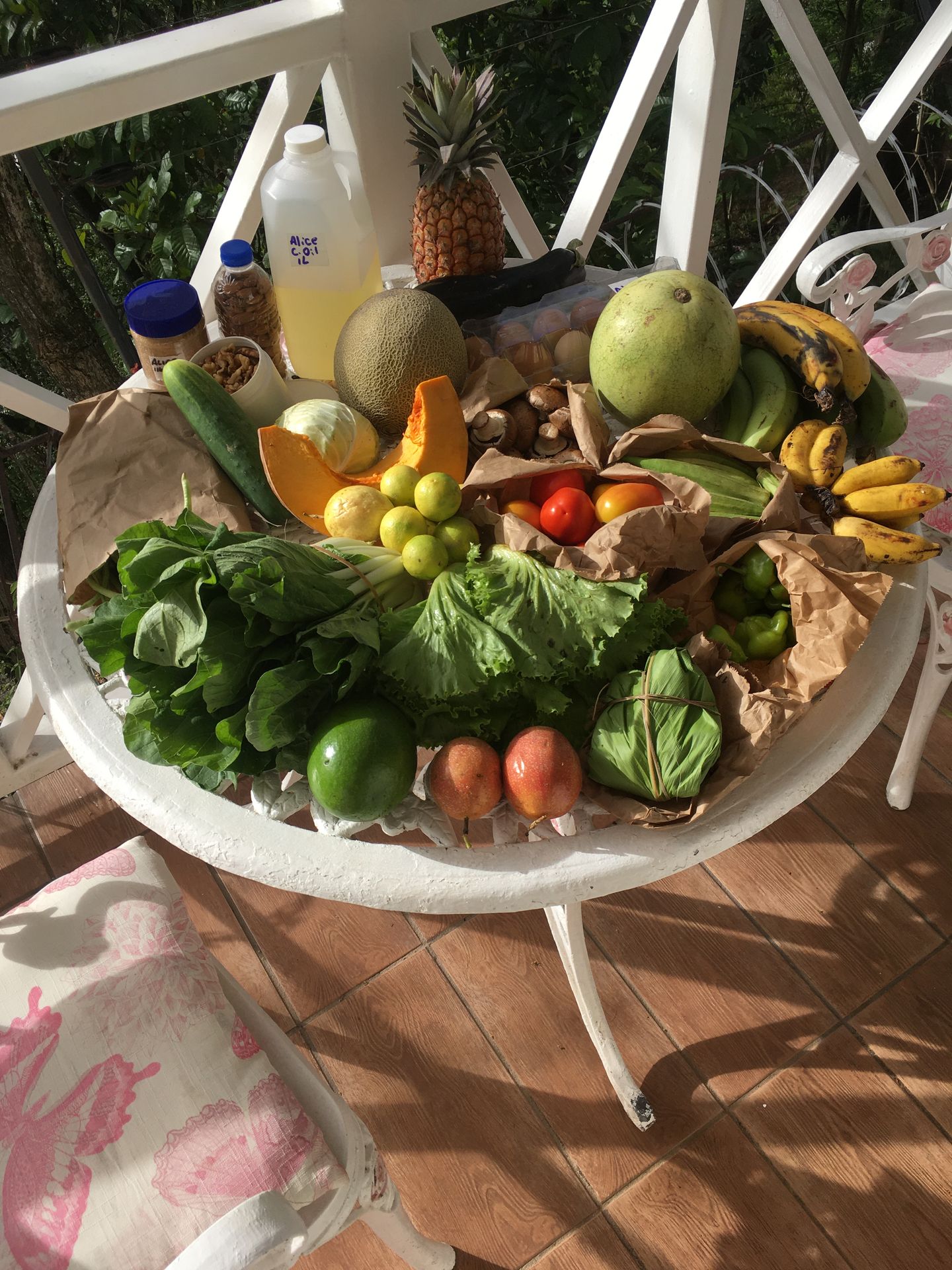The Tragedy Of Waste –
How Food Not Eaten Is Hurting Our Planet
By Mario Singh
Assistant Manager, Sustainability - The National Gas Company of Trinidad and Tobago

LINKAGE Q4 (2022) - The Anniversary Issue
A round the world, millions of dollars’ worth of safe, edible food items are either lost or wasted daily. The reasons for this loss and waste are manifold, as are its impacts. Food waste is a complex problem, with economic, environmental and developmental implications that we cannot afford to ignore. This is one reason why tackling food waste is a pillar of the partnership forged between The National Gas Company of Trinidad and Tobago Limited (NGC) and Nutrien in June 2022, which is aimed at boosting local food and nutrition security.
A CLOSER LOOK AT THE PROBLEM
Food waste refers broadly to food that is produced for human consumption but is not eaten. Depending on the stage at which food is removed from the value chain, it can be categorised as ‘lost’ or ‘wasted’.
Food waste in numbers
|
Around a third of all food produced globally – some 1.3 billion tonnes - is lost or wasted every year.[1]
|
|
Globally, around 14% of food produced is lost between harvest and retail, while an estimated 17% of total global food production is wasted (11% in households, 5% in the food service and 2% in retail).[2]
|
|
The Caribbean and Latin America waste 78 million tons of food annually, which totals 6% of global food production, and Trinidad and Tobago is the most wasteful country in the region.[3]
|
|
The United Nations Environmental Programme (UNEP) estimates that Trinbagonian households dump 103,127 tonnes of food each year.
|
|
The FAO estimates that if food waste from all sources in Trinidad and Tobago can be eliminated, the roughly 7.5% of the national population that is undernourished could be fed.[4]
|
[ 1] https://www.unep.org/news-and-stories/story/how-feed-10-billion-people#:~:text=There%20is%20enough%20food%20for%20everyone.&text=Rather%2C%20it%20is%20a%20problem,is%20used%20for%20livestock%20grazing.
[2] https://www.un.org/en/observances/end-food-waste-day
[3] https://borgenproject.org/hunger-in-trinidad-and-tobago/#:~:text=Lystra%20Fletcher%2DPaul%20reported%20that,wasteful%20country%20in%20the%20region
[4] https://borgenproject.org/hunger-in-trinidad-and-tobago/#:~:text=Lystra%20Fletcher%2DPaul%20reported%20that,wasteful%20country%20in%20the%20region.
WHY ARE WE WASTING SO MUCH?
There are many reasons why so much edible food does not get consumed.
Looking first at food loss, agricultural practices bear some of the blame. Inefficient mechanical harvesting can leave crops unpicked, or damage produce and make them unfit for sale. To protect against possible crop failure or losses, some farmers may plant more than they can sell, which leads to dumping if the anticipated production losses do not occur. During transportation, storage, processing and packaging, more food is lost due to improper handling and poorly regulated environments which accelerate spoilage.
Market pressures are another major contributing factor. The ‘paradox of plenty’ in agriculture is that excess production fells prices. If market prices are lower than harvest and transportation costs, farmers often choose to leave crops in the field. Depressed demand prompts similar action.
No matter the country, at the end of the value chain, consumers contribute to both food loss and waste. Consumers’ preference for unblemished produce leads producers to discard perfectly edible food crops on the basis of cosmetic imperfections. Then, of course, there is the waste that occurs when food is ultimately purchased. Whether raw or cooked, mountains of food are dumped into landfills because people purchased more than they could or wanted to consume.

THE IMPACT OF WASTE
This waste exacts a high cost. We are wasting more than a third of the food we produce, while over 10% of the world’s population goes hungry. [5] In Trinidad and Tobago, a survey conducted by the World Food Programme in 2021 found that nearly 25% of respondents were forced to cut food consumption due to financial pressures during the pandemic, with 4% going without food for an entire day in the week prior to the survey. [6] This alarming rate of food insecurity is replicated across the world, and casts food waste as a moral crime against humanity.
The economic impact of food waste is equally shocking. The UN Food and Agriculture Organisation (FAO) estimates that impact to be around USD$1 trillion each year. [7] Factor in externalities associated with lost resources, environmental degradation and imbalanced access to nutrition - among others - and that cost multiplies to USD$2.6 trillion. [8]
A third and increasingly important dimension of impact is environmental. Rotting food in landfills emits methane - an extremely potent greenhouse gas which is accelerating climate change. Its contribution to global emissions is so high, in fact, that the FAO has stated: "If food waste was a country, it would be the third largest carbon emitter, after the United States and China." [9] Viewed from another angle, food waste accounts for 38% of total energy usage in the global food system. [10] This means that emissions associated with two-fifths of the energy used in our food value chain currently have no productive trade-off – we are generating those emissions in vain.
HOW CAN I HELP?
With more than half of all food waste happening at the retail and consumer levels, simple actions can make a world of difference.
[6] https://docs.wfp.org/api/documents/WFP-0000129030/download/
[7] https://www.fao.org/nr/sustainability/food-loss-and-waste/en/
[8] Ibid
[9] https://www.fao.org/3/i3347e/i3347e.pdf
[10] https://www.un.org/en/observances/end-food-waste-day
|
Shop purposefully
|
· Plan your meals where possible to ensure you only purchase items you are going to use. · Pay attention to ‘sell by’, ‘use by’, and expiry dates. ‘Sell by’ dates are a guide for inventory management, and not indicators of food quality. Items past their ‘use by’ or expiry dates, however, may not be safe to consume.
|
|
Eat wisely
|
· Cook just enough to serve your household or guests, and consume any leftovers within a short timeframe. · If dining out, ask about portion sizes before you buy. Share where possible. · At home, try using smaller plates.
|
|
Organise your food
|
· In your refrigerator, arrange produce and leftovers in such a way that items with a short shelf life are prominently in view. · In your cupboards, bring items close to expiration to the front of shelves so they can be used first. · Before going to the grocery or market, take stock of what you have in your pantry or fridge so you do not purchase unnecessarily.
|
|
Support local
|
· Buy locally grown produce to help clear the local market and reduce losses to farmers. · Patronise farmers in your community where possible – reducing the distance from farm to market means fewer losses of perishable items during handling and transportation.
|
|
Donate
|
· If you have a surplus of food, share with a neighbour or someone in need (once it is safe to consume). · Donate unwanted canned or dry goods to food banks, shelters etc. once they are safe to consume. · If you own a food business, partner with organisations that coordinate food donations if you have food to spare (eg. Nourish TT).
|
If the world is to achieve its sustainability targets by the year 2030, we need more individual accountability. Food waste is one of society’s biggest problems, but fortunately, it can be addressed with relatively simple solutions.
ABOUT THE AUTHOR

Mario Singh is the Assistant Manager, Sustainability - The National Gas Company of Trinidad and Tobago